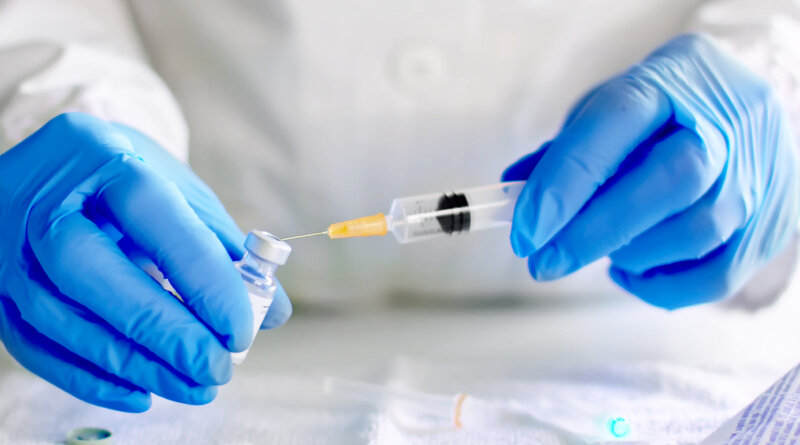CDC Panel Votes on Who Should Get COVID Vaccines First
Dec. 1, 2020 — An influential government committee has recommended that health care workers and people who reside in long-term care facilities get the first doses of COVID-19 vaccines when they become available.
In a 13-to-1 vote, the Advisory Committee for Immunization Practices (ACIP) said health care workers and residents of nursing homes and other residential care facilities should be first in line to get COVID-19 vaccines.
Health care workers include any paid staff or volunteers who work in health care settings. Long-term care facility residents include adults who live in facilities that provide medical or personal care to people who cannot live independently.
The vote follows months of deliberation by the committee to determine the most effective and fairest way to distribute scarce early doses. It follows similar recommendations made by the National Academies of Sciences in October.
The ACIP is made up of 15 voting members, eight nonvoting members from other government agencies, and 30 nonvoting members of other organizations that have expertise and interest in vaccination. The committee has met frequently this year to prepare for the COVID-19 vaccine rollout.
If the recommendation is approved by CDC Director Robert Redfield, MD, it will be passed on to states, which have already been working with the agency to create their distribution plans.
This recommendation is not binding, though states usually follow the ACIP’s guidance.
The ACIP prioritized health care workers for vaccination because of a “multiplier effect” — keeping them healthy ensures the health of others. The CDC says there are roughly 21 million health care workers in the U.S. More than 3 million Americans are residents in skilled nursing or assisted living facilities or other group care homes.
In making its recommendation, the committee prioritized saving lives over using the vaccine to slow disease transmission.
“I think everyone pretty much across the board agrees that with a limited number of doses, the best approach is to try to protect as many of the high-risk people as possible. That places health care workers at the very top,” says Josh Michaud, PhD, associate director of global health policy for the Kaiser Family Foundation in Washington, D.C.
“If you wanted to quash transmission, you would target your vaccination programs to those who do the most transmission in the United States, which is sort of young adults,” he says.
It is generally expected that vaccine acceptance will be high among health care workers, a group that will also be closely watched for any side effects related to the vaccines. The CDC has developed a voluntary cellphone-based system called V-Safe that will monitor health care workers via regular text messages and phone calls.
But survey results presented at a previous ACIP meeting revealed significant worry about the vaccines even among this group. In a CDC survey of health care workers, 63% of them said they would get the vaccine. A separate survey by the American Nurses Foundation found only 34% of nurses said they would get the vaccine if their employer doesn’t require them to do it, 36% said they would not get a COVID-19 vaccine, and 31% said they were unsure.
CVS and Walgreens have signed agreements with the federal government to give vaccines to residents of long-term care facilities, agreeing to make three visits per facility to dole out shots.
Initial doses of a vaccine could be sent out as early as mid-December, Vice President Mike Pence told governors during a call on Monday.
Once a vaccine is approved, things will move quickly.
Nancy Messonnier, MD, director of the National Center for Immunization and Respiratory Diseases, says most jurisdictions expect to be able to vaccinate all their health care workers within about 3 weeks of vaccine approval.
After the first vaccine deliveries, 5 million to 10 million more doses could be delivered each week on a rolling basis.
The FDA is scheduled to make a decision about Pfizer’s emergency use authorization for its COVID vaccine after an advisory panel meets on Dec. 10 to review the company’s application.
The ACIP will meet and vote again on recommendations for specific products after they are approved by the FDA. Those recommendations trigger financial reimbursements by the federal government’s health plans like Medicare and Medicaid.
Ultimately, the governors of each state will decide how early doses of the vaccines are distributed.
“In the final say, it will be our nation’s governors in implementing the distribution plans to tell us … where to ship, and they will decide who the vaccine is given to. We hope our recommendations will carry weight with them, but at the end of the day, they will make that decision,” Health and Human Services Secretary Alex Azar said in an Operation Warp Speed news briefing last week.
He said the vaccine would be distributed to states according to a formula based on each state’s adult population.
Gen. Gus Perna, chief operating officer of Operation Warp Speed, said in a Nov. 23 news briefing that he was planning for at least 6.4 million vaccine doses to go to states in the first push.
Operation Warp Speed has not yet released the list of the doses that will be allocated to each state.
For a short time, supplies of vaccine won’t cover everyone even in the groups flagged for first priority. So states will have to decide which workers and residents most need the vaccine.
On Tuesday, the CDC further recommended that health care workers who have direct contact with patients and can’t telework be first of the first. They also suggested that residents in nursing homes get priority over residents of other kinds of residential facilities because they tend to be older and more physically frail.
One major issue to be ironed out is what to do for health care workers who are pregnant or nursing. The CDC says 75% of health care workers are women, and as many as 330,000 may be pregnant when a vaccine becomes available. While COVID poses a greater risk to pregnant women, the CDC says it has no data on mRNA vaccines, like the type made by Pfizer and Moderna, in pregnancy. The agency says it’s awaiting information from the clinical trials for review.
On Monday, California Gov. Gavin Newsom announced that his state expected to receive 327,000 doses of Pfizer’s vaccine in mid-December. The state has more than 2 million health care workers, meaning that the first doses will fall far short of meeting the full demand even for people who get first priority.
According to a graphic released by Operation Warp Speed, Pfizer will distribute its own vaccines, which require ultracold storage. The Moderna vaccine will be distributed by McKesson, which has a longstanding contract with the CDC and distributed vaccines during the H1N1 flu epidemic. McKesson also distributes seasonal flu vaccines to states.
Both Pfizer’s and Moderna’s vaccines require two doses per person. Pfizer’s vaccine needs a booster 3 weeks after the first dose. Moderna’s second dose is given 4 weeks later.
In the Nov. 23 news briefing, Azar, the HHS secretary, said he expected to have enough vaccine to vaccinate those who are most vulnerable by the end of December.




Read information now. Everything what you want to know about pills.
cheap zithromax pills
Some trends of drugs. Cautions.
Did you know these facts on CBD OIL and Full Spectrum CBD Hemp Oil? Cannabinoids are isolated from hemp using supercritical CO2 extraction. Thanks to modern-day technology, the resulting service is clean, devoid of heavy metals and unneeded waxes, naturally present in the plant, and the sucked liquid has a typical, oily consistency. CBD oil contains cannabidiol as a base active ingredient and might contain only trace quantities of tetrahydroxycannabidiol (THC). It is advised by medical professionals and pharmacists as an antioxidant and substance that blocks the action of proinflammatory cytokines (proteins), e.g. in Crohn’s illness or ulcerative intestinal tract. RSO oil has a low CBD material, while high THC. Of course, the key task of RSO is to cause a psychoactive impact, although it can also stimulate “ill” brain structures. It is worth understanding that supplements of this type is primarily used by individuals to whom standard therapy does not bring relief in illness. The synergistic (enhancing) action of CBD and THC relative to each other is used here. When used independently, both cannabinoids can do much more together than. In addition, they collectively promote the department of inactive nerve cells, nourish the fatty envelope of the nerves, and prevent myelin inflammation that triggers loss of function in some autoimmune diseases. There are also stories where marijuana in its natural form softened spasticity, lowered the frequency of convulsions and seizures, and reduced unpleasant scrapie in Parkinson’s disease. This is where the concept of getting RSO, meant just for chronically ill people, stemmed . Both cannabis oil type CBD and RSO likewise consist of other cannabinoids, such as cannabichromene (CBC) and cannabigerol (CBG). The secret is not, however, that CBD typically has actually a composition expanded to include flavones, flavonoids, terpenes, terpenoids, amino acids and omega acids. The distinction is mostly due to intentions guiding humankind to utilize one or the other product. CBD medical marijuana oil is a rather beneficial mix of cannabinoids, developed to protect against 21st century disease. It’s finest to use all of these substances together, as nature developed them and confined in cannabis inflorescences. Oil of cannabis in a type of pastime APR consists of small quantities of CBD, stabilized by the existence of THC. Makers focus on the synergistic impact of one substance relative to the other, while abandoning the presence of CBC and CBG. Why such a decision? – Modern scientific research study reveals that CBD + THC manage serious autoimmune illness, while CBC or CBG show minimal activity in the existence of both substances, simply like flavonoids, terpenes or flavones, therefore their content in the option appears to be unnecessary. In addition, the cannabis stress from which THC and CBD are obtained contain minimal amounts of other cannabinoids. RSO oil is completely illegal in Poland, which is why it can not be gotten in any lawfully operating store on the marketplace. Obviously, there are a variety of amateur approaches for acquiring it, however it’s great to know that substances acquired synthetically in home laboratories are unsure, untested, and the impact unknown. The solvent for the production of family RSO is normally fuel, alcohol and even kerosene, which rather of treating, poison. Alcohols and their like impair cannabinoids, and so in truth, they don’t bring anything new to the medical world. Cannabis oil has actually already marked a new era in which guy stopped to fear what is unidentified, and began to find what our ancestors had actually already observed and use the considerable potential, in the beginning glimpse, a little bizarre relationships, associated mainly with pathology. Medical cannabis, contrary to its name, does not imply fermented female inflorescences and leaves containing psychoactive compounds coiled in so-called “Joints”, but an advantageous oil without psychoactive THC. A basic person, after taking dosages of medicinal cannabis and attaining the appropriate state of cannabinoids in the blood, can enjoy increased immunity, minimized vulnerability to cancer, postponed aging and lowered danger of stroke or heart attack. CBD oil consists of cannabidiol as a base ingredient and might consist of just trace amounts of tetrahydroxycannabidiol (THC). RSO oil has a low CBD content, while high THC. Both marijuana oil type CBD and RSO likewise consist of other cannabinoids, such as cannabichromene (CBC) and cannabigerol (CBG). CBD medical cannabis oil is a rather helpful mix of cannabinoids, developed to safeguard versus 21st century disease. Oil of marijuana in a kind of hobby APR includes small amounts of CBD, stabilized by the existence of THC.